FT Health: The dangers of data
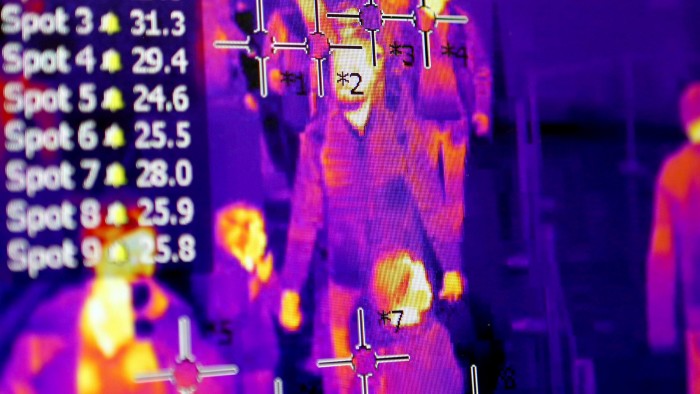
Roula Khalaf, Editor of the FT, selects her favourite stories in this weekly newsletter.
A little data can be a dangerous thing. As the latest instalment of the FT’s digital health report highlights, technology has proved valuable during the coronavirus pandemic in helping rapidly collect and analyse information for clinicians, drug developers and policymakers alike.
But it has also contributed to an “infodemic” of distorted analysis, fuelling misleading information and a politicisation of prevention measures, from lockdowns to the wisdom of wearing face masks.
One notable risk is that a data-driven approach focuses disproportionate attention on selective statistics that are easy to measure at the expense of others which are more nuanced or difficult to collect. That has given widespread attention to infection rates around the world, for example, adding to the sense of urgency in tackling Covid-19.
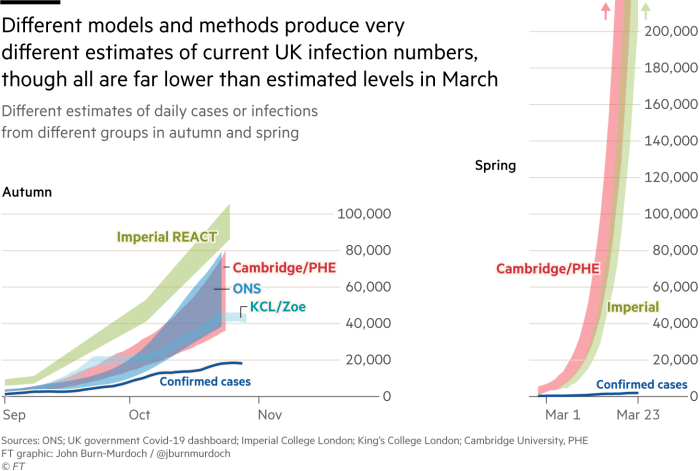
But the degree of severity, survival rates and relative risk compared with other diseases are less clear. In particular, there are difficult trade-offs between the immediate pressures of coronavirus and the longer-term, more subtle knock-on effects on other conditions that will only become evident in the months ahead.
That includes deferred surgery and diagnosis which are likely to increase the number of more severe cases of cancer; a rise in infectious diseases as a result of immunisation campaigns being put on hold for preventable conditions like measles; and delays in clinical trials of new treatments for many conditions.
Projections of infection growth and the burden on hospitals are also — despite their limitations — a significant driver of coronavirus decision-making, adding to the confusion.
Send us your views on these issues to health@ft.com, comment beneath the online version below and fill out our wider questionnaire on AI and digital health.
Three questions
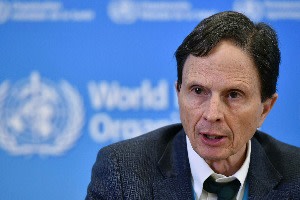
David Heymann, an academic and senior health official who says we need to learn to live with the virus.
Which countries have responded well to coronavirus?
Countries in Asia in particular: China, Taiwan, Singapore, South Korea, Japan, Vietnam, New Zealand and Australia. It’s likely the response in many of these countries was strong because of their experience of Mers and Sars. They were much better prepared and many had built extra hospital capacity and strengthened their disease detection and response mechanisms. In January, after the initial notifications when infections started to occur, they stopped discrete outbreaks. In many parts of Asia, there is a culture where people consider it very important to protect themselves but also feel an obligation to protect others and this has been an asset.
What’s the key to managing a pandemic?
You can’t run outbreak control top-down from the centre. Look at Ebola in West Africa: it was controlled once the communities took charge and understood the importance of safe burials and of participating in contact- tracing activities. Trust was then developed between communities and the response teams. The centre must set the policies and strategies, but implementation has to be local and requires people to have trust.
What should governments focus on now?
We don’t yet have a licensed therapy or a vaccine. Even if we do get an effective vaccine, will it protect against infection and for how long? Will it protect against serious illness in those who become infected? Right now, we have good diagnostic tests and we should use them strategically both within countries and to facilitate international travel. Contact tracing must be linked with rapid testing results. This permits effective tracing — backwards to find any common sources of infection so that it can be rectified, and forwards to isolate contacts and decrease transmission chains. You don’t necessarily need a national lockdown, but a focus on controlling transmission in high-risk areas identified through backwards contact tracing, found in many countries to be nightclubs, bars and restaurants. At the same time, we all need to learn to live with the virus — to do our own risk assessment and to protect ourselves and others.
Covid catch-up
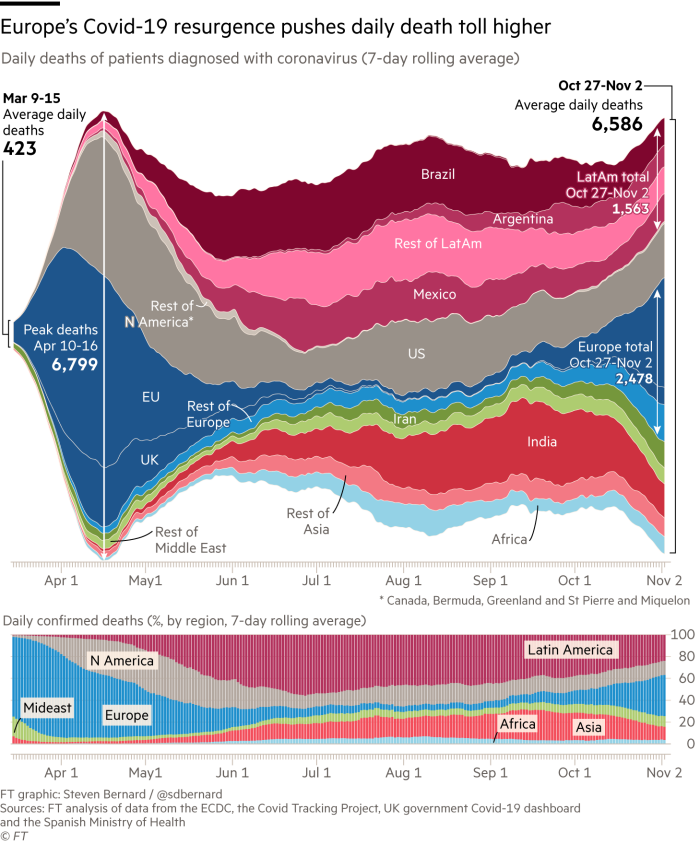
Since our last edition, global coronavirus infections have hit record numbers, hospitalisations have increased and scientists have warned of a new variant of the virus spreading across Europe as the continent’s political leaders reflect on their failure to contain the pandemic and grapple with discontent over new lockdowns. Last week’s World Health Summit underlined the depth of the setbacks to global goals caused by the crisis while UN agencies called for more co-operation on science and the WHO chief hit out at the failure of global leadership. (FT, Politico, Devex, UN News)
Read our series: Could the world have been spared?
FT analysis: The global crisis in data
WHO coronavirus dashboard
News round-up
Vaccine politicking continues . . . China’s “vaccine diplomacy” continued as it joined Covax, the WHO-led initiative to ensure fair distribution of a potential coronavirus vaccine. Sanofi and GSK said they would supply 200m doses to the project. The race for a vaccine has prompted debate around costs, a subject drugmakers have so far been reluctant to discuss. The WHO is planning a vaccine insurance scheme for poorer countries. A new report said “vaccine nationalism” — where countries jostle for first access and potentially hoard key components — could cost the world up to $1.2tn in lost GDP a year. The study argues that rich countries could actually benefit from taking on the cost of global supply, experiencing a return of $4.8 for every $1 spent. Another report said high- and middle-income countries had already bought 3.8bn vaccine doses, with options for 5bn more, sending the rest of the world to the back of the queue. Pharma groups said countries supporting drug development — such as Mexico, which is hosting human trials — would receive priority. (FT, Reuters, WHO, Bloomberg, Rand, Washington Post)
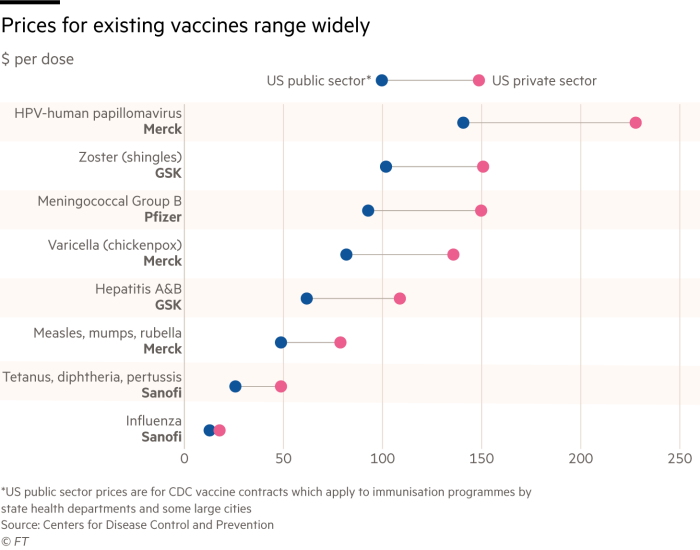
. . . as research intensifies AstraZeneca and J&J got the go-ahead to resume vaccine trials, but the Pfizer chief called for patience in the “last mile” of the process. Unicef is stockpiling up to a billion syringes in anticipation. Here’s a look inside Operation Warp Speed, the $18bn US race for a vaccine and here’s WHO’s “all-you-need-to-know about vaccines” guide and its list of almost 200 in the pipeline, including candidates from Pfizer and Moderna that could get emergency authorisation from US regulators as early as this month. (FT, The Hill, Bloomberg, WHO)
. . . while fake news sows doubt A global survey revealed 73 per cent of people were minded to take a coronavirus vaccine while 14 per cent would refuse and 14 per cent would hesitate. A study found a significant role was played by social media — as well as foreign disinformation campaigns — in spreading doubts about vaccine safety. A collaboration between the WHO and Wikipedia aims to stop the spread of false information about the pandemic. (Nature, BMJ, New York Times)
Financial fillip A vaccine bond sale raised $500m to fund immunisation programmes in developing countries, including for Covid-19, in a move FT Lex analysts described as a sign that investors were warming towards engaging in social issues. The money was raised for Gavi, the UN-backed vaccines alliance, by the International Finance Facility for Immunisation. The cost of immunising people around the world against coronavirus has been estimated at more than $20bn. (FT)
Therapies and testing Gilead’s Remdesivir became the first Covid-19 treatment to be approved by US regulators — despite poor results in WHO trials. Researchers are battling to make antibody therapies cheaper and more powerful. This is what we know so far about which treatments work. The pandemic has given a much-needed boost to the diagnostics sector, but the surge in European infections is testing the limits of test and trace programmes. (FT, Nature, The Conversation)
Mental health matters As the toll on mental health from the pandemic becomes clearer, a new project, the Healthy Brains Global Initiative, aims to do for the problem what the Global Fund to Fight Aids, Tuberculosis and Malaria has achieved for infectious diseases. HBGI’s backers say the $10bn sought from philanthropic foundations, companies, wealthy individuals and governments compares with direct and indirect costs of mental illness already more than $3tn a year and projected to hit $6tn by 2030. (FT)
Communicable and infectious disease Despite some shifting of the balance in drugs markets to improve poorer countries’ access to a potential coronavirus vaccine, health systems and drug companies are generally not incentivised to invest in preventing and preparing for infectious disease threats. Read the FT report on communicable diseases and our new investigation: The next pandemic — where is it coming from and how do we stop it?
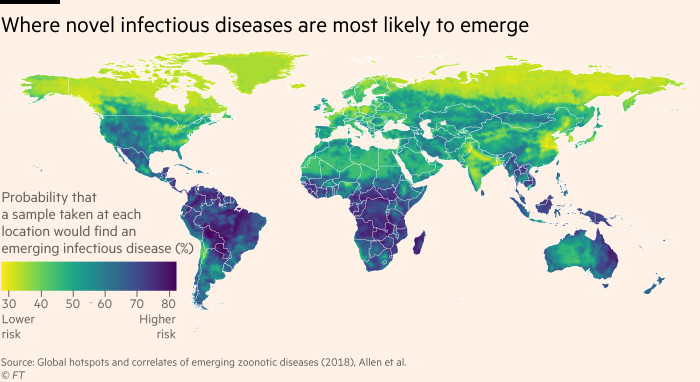
Wellcome Trust shifts focus The UK-based philanthropic organisation, one of the world’s largest non-governmental funders of science, is shifting emphasis towards infectious diseases, global warming and mental health, bringing it closer to outfits such as the Bill & Melinda Gates Foundation with a clearer focus on public health. (Wellcome, Science)
UN zoonosis warning The United Nations Diversity Panel said man’s destruction of the natural habitat of animals made their diseases much more likely to jump to humans in the future. The majority of emerging diseases such as Ebola and almost all known pandemics, from flu and HIV/aids to Covid-19, are zoonoses (of animal origin). (IBPES, FT table)
Covid crushes economies The effect of the pandemic on the fight against global poverty was underlined by the World Bank. Martin Wolf, FT chief economics commentator, argued governments needed to focus on the cost of inaction — not the cost of supporting their economies. Here are his ten ways the pandemic will reshape the world. Some say the wealthy world has not done enough to help poorer nations. More studies are emerging of the link between deprivation and more severe Covid-19 outcomes within countries as the disease widens health gaps and increases inequality. The annual report of the World Bank-led Global Financing Facility details the state of health services in poorer countries that are now threatened by the pandemic. (Devex, World Bank, NYT, FT, GFF)
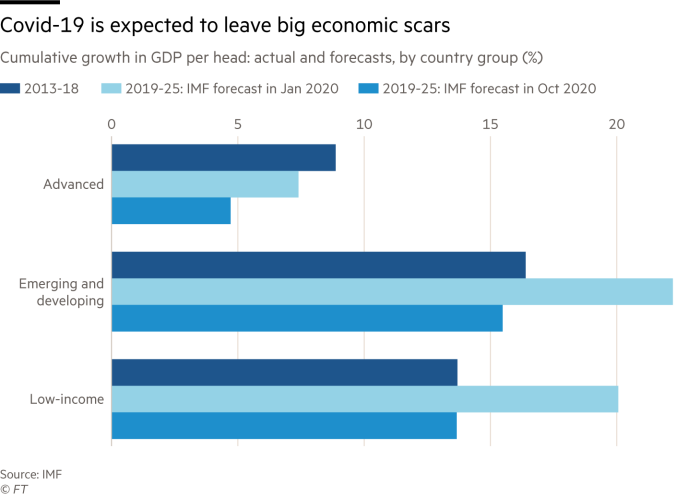
Focus on . . . TB Tuberculosis remains the world’s deadliest infectious disease — despite being treatable and curable. A new WHO report however details vast funding gaps for treatment — with just half of a $13bn target secured — as well as for research. Covid-19 is having a severe impact on treatment for groups such as African miners. Among the few bright spots are a new risk prediction tool from researchers at University College London. (WHO, Reuters, Guardian)
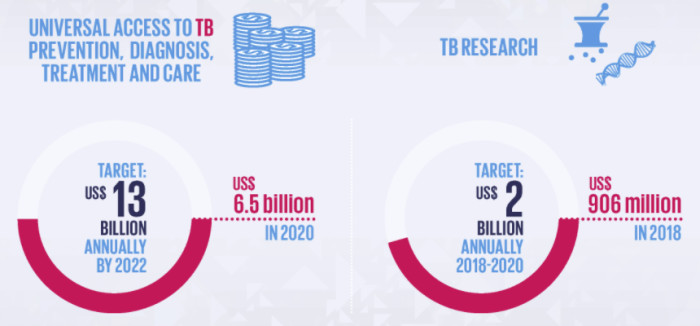
Indian pharma squeeze India’s role as “the pharmacy of the world” because of its role in supplying medicines to poorer countries, is under threat. China, previously a supplier of cheap ingredients, is now formulating its own drugs, while western countries are increasingly protecting their own pharma industries to ensure drug security. (The Conversation)
HIV/Aids funding New figures ahead of World Aids Day show funding for fighting the disease is “way off-track”. Lessons from HIV can inform our response to the coronavirus pandemic. Watch the CSIS documentary series on the history of the pandemic. (Aidsfonds, NEJM CSIS)
Best from the journals
World health snapshot The Global Burden of Disease, an annual compendium of world health, details progress (pre-Covid) in areas such as life expectancy and child mortality but lays bare the link between a country’s health and social/demographic factors. “Health is created from a broader prospectus that includes the quality of education (primary to tertiary), economic growth, gender equality, and migration policy, “ it says. “Unless deeply embedded structural inequities in society are tackled and unless a more liberal approach to immigration policies is adopted, communities will not be protected from future infectious outbreaks and population health will not achieve the gains that global health advocates seek. ” (Lancet Global Health)
Child deaths in Africa Although under-five mortality reduced globally from 93 per 1000 live births in 1990 to 39 in 2018, in sub-Saharan Africa it increased from 31 per cent to 54 per cent. About 22 per cent of the children experiencing an early death suffered from fever, 23 per cent from cough and 16 per cent from diarrhoea. Global health systems must be redesigned to improve maternal and newborn survival. (BMJ Global Health)
Progress towards UHC A 172-country study assesses health spending and moves towards universal health coverage. A linked commentary says substantial progress towards UHC will be difficult without simultaneously promoting universal social protection to alleviate poverty. (BMJ)
Primary healthcare Many people in poorer countries use hospitals as a first port of call rather than local health centres, making primary healthcare more difficult to administer. This study of 56 countries examines why. Covid-19 has show that strong primary healthcare is the basis of preparedness and response planning, particularly for infection prevention and control. This accompanying report looks at how it could be improved. (WHO World Health Bulletin)
Covid and air pollution Air pollution is linked to about 15 per cent of global deaths from Covid-19. In Europe the proportion is about 19 per cent, in North America 17 per cent and in East Asia 27 per cent. The annual autumn spike in air pollution in India could be especially fatal this year. Separately, the State of Global Air report (chart below) said pollution — the fourth leading risk factor for early death worldwide — was a factor in almost 500,000 premature deaths last year. (Cardiovascular Research, New York Times, State of Global Air)
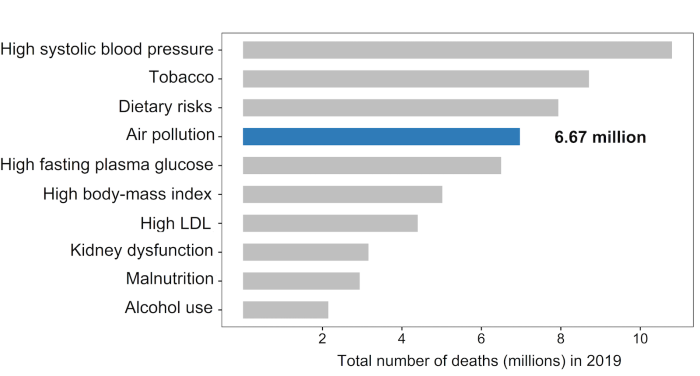
Infectious diseases and NCDs Non-communicable diseases account for around three quarters of global deaths, with poorer countries disproportionately affected. A substantial amount of these NCDs are caused by infectious conditions, which in some countries — for example in sub-Saharan Africa — outweigh common causes such as tobacco and alcohol use. (Lancet Global Health)
Getting the measure of malaria The first meta-analysis of preventive malaria drugs on schoolchildren in Africa shows they can almost halve incidence of the disease. Another study looks at the differences in men’s and women’s experience of malaria. The WHO estimates 3.4bn people are at risk of contracting the disease, which kills 400,000 every year, but the coronavirus pandemic is having a severe effect on treatment. (Lancet Global Health, Elife, Economist).
Lessons from history This is not the first time Europe has experienced the second wave of a deadly epidemic spreading faster than the first. Can London plague records from the 17th century give us any insight into today’s crisis? (PNAS)

Pick of the pods
Vaccine supply chains How will countries around the world address the extreme logistical problems of administering a Covid-19 vaccine? (Politico Global Translations, 36m)
Making the lockdown work Specialists discuss messaging around the second UK lockdown and what needs to be done to make it effective. (BMJ, 58m)
Lessons from HIV/Aids Covid-19: what can we learn from the HIV/Aids pandemic? (Guardian, 19m)
Climate change and cancer From air pollution and lung cancer to ultraviolet radiation and skin cancers, a discussion of how climate change is affecting cancer control. (The Lancet Oncology, 12m)
Community-based health systems How community-based health systems in Africa help build resilience in local populations and offer useful lessons for the rest of the world. (Wilson Center, 13m)
The month ahead
Nov 9-11 FT Global Pharma and Biotech conference: “Transforming the Pharma Business for Growth.” Speakers share their expertise on an increasingly complex and uncertain political and pricing environment, reshaping the pharma pipeline for growth and the coronavirus pandemic as a 21st century case study.
Nov 9-14 World Health Assembly — virtual meeting of the supreme decision-making body of the WHO — resumes
Nov 11 Family Planning 2020 progress report on enabling the take-up of modern contraceptives in the world's poorest countries
Nov 11-15 Hamwe Festival on social justice and mental health
Nov 12 World Pneumonia Day
Nov 12 EU report on substance misuse among school students
Nov 14 World Diabetes Day
Nov 16 FT special report: future of antibiotics
Nov 18-24 World Antimicrobial Awareness Week
Dec 1 World Aids Day
Dec 2 Next edition of FT Health
Dec 3 International Day of People with Disabilities
End notes
Previous issue Fighting vaccine nationalism
Contact Email us via health@ft.com, like us on Facebook and follow us on Twitter @fthealth and LinkedIn.
FT Health by email Register here to get FT Health in your inbox on the first Wednesday of each month.
More FT resources You can find all FT in-depth health reports at FT Health Centre.
Coronavirus Business Update Sign up here for our newsletter chronicling the epidemic’s impact on markets, global business, workplaces and our daily lives. The FT is offering a free 30-day trial to this email, which includes access to FT.com.
Final thought
One of the few positives from the current crisis is richer countries being shaken out of their complacency that epidemics are somehow a developing-world phenomenon. “The world ignored increasingly urgent warnings by infectious disease experts that an unknown pathogen — disease X — would emerge from animals and unleash a devastating pandemic,” says the FT. “If Covid was disease X, we must be far better prepared for disease Y.”
Comments